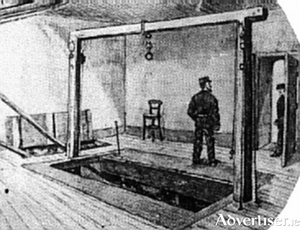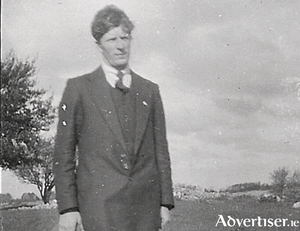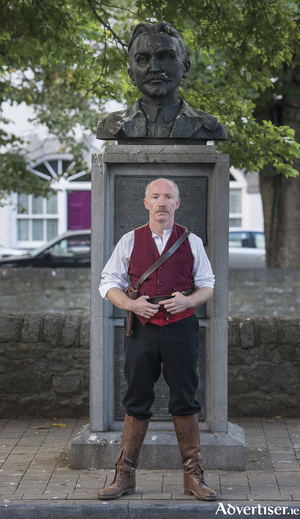Search Results for 'John MacBride'
8 results found.
The Shawl of Galway Grey
The murderous and vengeful events that followed 'Bloody Sunday' 1920 impacted on the town of Clifden in an unexpected way. There was shooting and murder on its streets; and, following a rampage by the Black and Tans, practically half the town was burnt down.
The long road from the Bloody Code

‘No person shall suffer death for any offence’ - no, it is not a medieval monarchical decree, it is in fact the first order of the Criminal Justice Act 1990. The Act prohibited capital punishment under all circumstances within the Republic for the first time. The death penalty had remained on the Irish statute books exclusively for the offences of treason and murder, but from 1990 onward those crimes would carry a sentence of life imprisonment. To say the 1990 Act ended centuries of capital punishment in Ireland would be telling only half the story.
1916 belongs to every Mayo town and village
The nationalist Irish Volunteers were established in November 1913 as a response to the formation of the unionist Ulster Volunteers in 1912. Members of the Provisional Committee of the Irish Volunteers selected areas around the country which they would visit with the aim of setting up Volunteer companies. Committee member Colonel Maurice Moore of Moorehall in Carnacon outside Castlebar chose to return to his home county to organise and mentor the men of Mayo. Moore had military experience since the 1870s with the Connaught Rangers and was well respected by both traditions.
Bike Buffet for Culture Night

Westport Smarter Travel and Gnó Mhaigh Eo will present a special Bike Buffet for Culture Night, this evening Friday, September 16. The plan is to meet in Westport Town Hall at 6.30pm, where people can enjoy a deoch while catching a sneak peak of the newly written play on the life of Major John MacBride: Foxy Jack – Giolla Éireann.
Get out and explore a different Mayo this Heritage Week
Explore and experience nocturnal wildlife in Ballycroy, go whale watching at Downpatrick Head, look back at what life was like 100 years ago in Kilmovee, listen to poetry, music and song to honour the people of 1916 at the Jackie Clarke Library, or follow the Tóchar Phádraig Medieval Pilgrim Path. These are just some of the activities you can engage in during Heritage Week in Mayo
Get out and explore a different Mayo this Heritage Week

Explore and experience nocturnal wildlife in Ballycroy, go whale watching at Downpatrick Head, look back at what life was like 100 years ago in Kilmovee, listen to poetry, music and song to honour the people of 1916 at the Jackie Clarke Library, or follow the Tóchar Phádraig Medieval Pilgrim Path. These are just some of the activities you can engage in during Heritage Week in Mayo
Galway in the weeks leading up to the Rising

On Tuesday 25 April 1916, Galway became the only county outside of Leinster to take up arms against the British state during the Easter Rising. In fact, only three parts of provincial Ireland participated in the Rising: Enniscorthy in county Wexford; Ashbourne in north county Dublin; and county Galway, where several hundred rebels took over 600 square miles of the east of the county between Tuesday 25 April and Saturday 29 April. Commemorative documentaries and history books pay little attention to the Galway Rising with the focus tending to be on the more dramatic events that took place in Dublin, but Galway’s Rising was an important part of the story of the Easter Rising; and the story of the hundreds of brave Galway men who stood up to the British Empire in April 1916 deserves to be told in detail. In this series of five articles, FERGUS CAMPBELL will explain why Galway rose when so many other parts of provincial Ireland did not, and he will also tell the story of what happened in Galway during the Rising, and the impact that the Rising had on Galway society. This account is based on many documents, police reports, newspaper accounts and memoirs but most of the quotations are derived from the witness statements that Galway rebels made to the Bureau of Military History during the 1940s and 1950s, and these can be read online.


